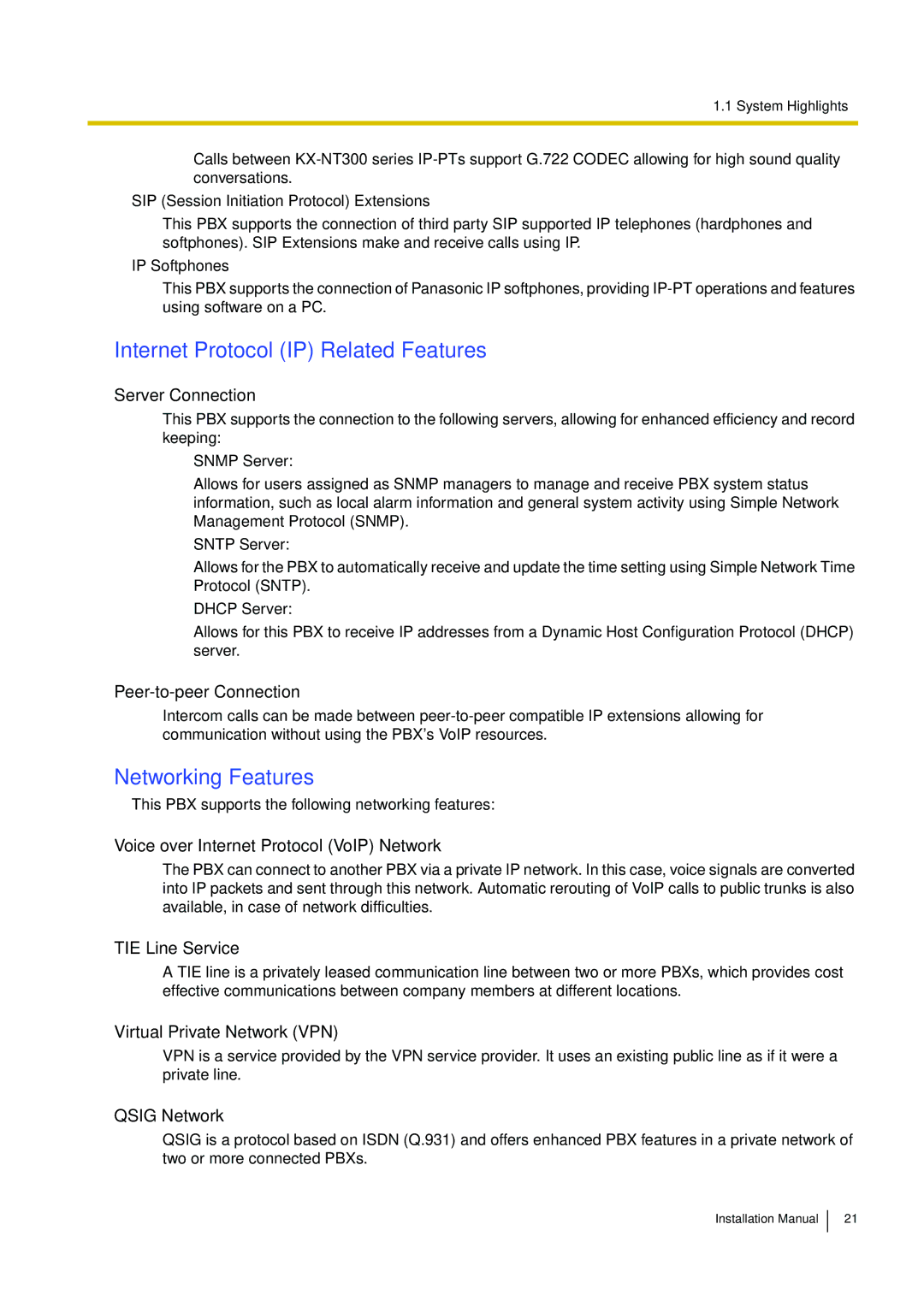
1.1 System Highlights
Calls between
SIP (Session Initiation Protocol) Extensions
This PBX supports the connection of third party SIP supported IP telephones (hardphones and softphones). SIP Extensions make and receive calls using IP.
IP Softphones
This PBX supports the connection of Panasonic IP softphones, providing
Internet Protocol (IP) Related Features
Server Connection
This PBX supports the connection to the following servers, allowing for enhanced efficiency and record keeping:
–SNMP Server:
Allows for users assigned as SNMP managers to manage and receive PBX system status information, such as local alarm information and general system activity using Simple Network Management Protocol (SNMP).
–SNTP Server:
Allows for the PBX to automatically receive and update the time setting using Simple Network Time Protocol (SNTP).
–DHCP Server:
Allows for this PBX to receive IP addresses from a Dynamic Host Configuration Protocol (DHCP) server.
Peer-to-peer Connection
Intercom calls can be made between
Networking Features
This PBX supports the following networking features:
Voice over Internet Protocol (VoIP) Network
The PBX can connect to another PBX via a private IP network. In this case, voice signals are converted into IP packets and sent through this network. Automatic rerouting of VoIP calls to public trunks is also available, in case of network difficulties.
TIE Line Service
A TIE line is a privately leased communication line between two or more PBXs, which provides cost effective communications between company members at different locations.
Virtual Private Network (VPN)
VPN is a service provided by the VPN service provider. It uses an existing public line as if it were a private line.
QSIG Network
QSIG is a protocol based on ISDN (Q.931) and offers enhanced PBX features in a private network of two or more connected PBXs.
Installation Manual
21
